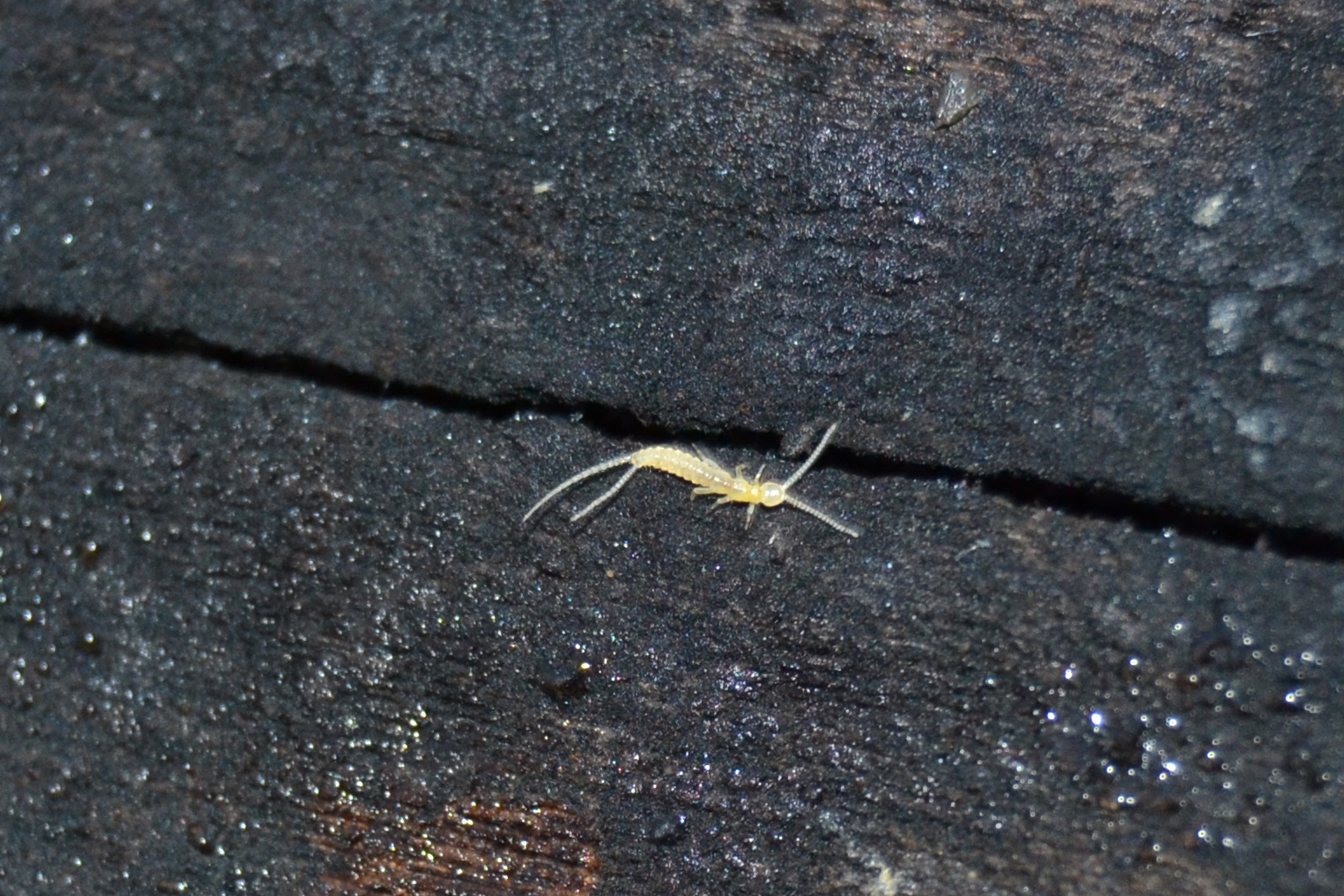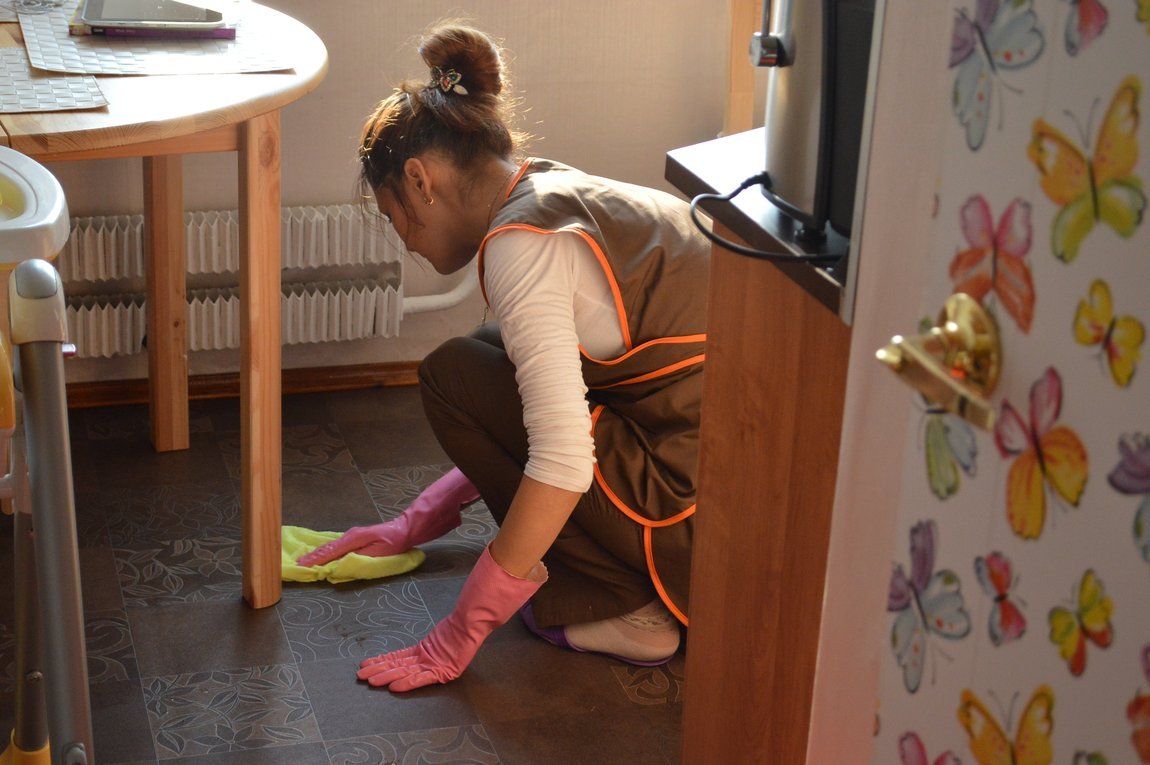Proven remedies against two-tails and earwigs
Two-tails in large numbers are not of practical benefit to humans. The possibility of being bitten, the unpleasant appearance scares people, and the spoilage of food by insects makes life almost impossible. Who are the two-tails? Where do parasites come from and how to get rid of them?

- Description of two-tailed and earwigs
- The difference between a two-tail and an earwig
- How two-tails get into housing
- How to get rid of two-tails
- How to get rid of parasites in an apartment
- How to exterminate a dvuhvostok in a private house
- How to kick a dvuhvostok from a greenhouse
- Prevention of the appearance of two-tails
- VIDEO: How to deal with two-tails and earwigs.
Description of two-tailed and earwigs
Two-tailed insects (Diplura) are wingless arthropods recently bred into a separate independent class, which includes such subspecies as Projapygidae, Campodeidae, Japygidae. Distributed mainly in the tropical and subtropical parts of the planet. In Russia, there are 20-30 species of Campodeidae, in the southern part of the country Japygidae. The average life span of a two-tailed insect is 12 months.

Appearance: body length 5-7 mm (specimens 50 mm long are found in the class), 6 pairs of legs, absence of eyes, elongated body, rounded head with antennae, extreme appendages of the last segment of the abdomen are bifurcated, pincer-shaped, or elongated, have the ability to rapid recovery, the oral cavity is hidden inside the head, light color.
They choose a habitat with high humidity: rotten trees, forest litter, damp soil, large anthills, plant debris, greenhouses, compost pits.

Food: leftovers from other animals, insects, plant waste, food debris, fruits, vegetables, shoots and leaves of plants.
Reproduction: the female lays eggs in the soil. Fertilization takes place by getting the spermatophore into the female's genital opening. Spermatophores are very tenacious, they can stand on a thin but stable stem for up to two days, waiting for a passing female. Cubs hatched from eggs differ from adult two-tails only in their smaller size and the absence of genitals.

Common earwig (Dermaptera) is an insect from the order of leathery-winged animals. There are 1200 species, distributed on almost all continents.
It is interesting! The name of the earwig appeared according to one opinion from the legend that an insect through the ear can enter the brain and destroy it, according to another opinion, the name comes from the word ear-wing (English). The wing shape of the insect is similar to the auricle.

Appearance: flexible, curved body, consisting of 10 segments and a dense chitinous cover. Size: 10-16 mm. The color is brown with a brown or resin sheen. The elongated articulated body ends with pincer-shaped cerci. Three pairs of yellow legs. Eyes are missing. Long, multi-segmented whiskers that replace the organs of touch. The mouth gnawing opening protrudes forward. Special Feature: Leathery wings. The anterior transverse ones are compact in size, the posterior ones are fan-shaped, covering the body to the middle of the abdomen. The earwig does not fly. With the help of her wings, she can sometimes make long jumps-flights.

Habitat: compost pits, heaps of natural debris, utility rooms with high humidity, old trees, a bathhouse, an outdoor shower, a flower bed.
Food: other insects, rotting crops, food leftovers, leaves of garden and garden plants in the country.
Reproduction: incomplete transformation. Mating is characterized by a duration of 6-8 hours. The female climbs and lays eggs in a specially dug hole in the ground. It helps the larvae to hatch by gnawing holes in the eggs, then licks and warms with its warmth.

Interesting! It is especially noteworthy that the caring female does not abandon the larvae until they turn into adult insects.
Other names: European earwig, tick (Forficula auricularia), pincher, two-tailed.
Insects are similar in sting shape, food type and lifestyle. These predators go hunting at night, during the day they hide in shaded, humid places.

The difference between a two-tail and an earwig
- Insects belong to different families.
- Body color and size.
- Earwigs have wings.
Two-tails are unpleasant to humans for their appearance. Various infections are carried on the legs. They do not pose a threat to human life, but an adult pincher can bite noticeably without deeply piercing the skin with pincers.

Attention! The venom injected with the bite is not poisonous. But allergies are possible: a painful blister appears at the site of the bite. Seek medical attention!
Small amounts of two-tails are beneficial. For example, they destroy aphids in the garden. But due to rapid reproduction, they begin to spoil all planted crops.

How two-tails get into housing
- There is high humidity in the room (Reasons: the room is poorly heated, there was a flood, poor ventilation).
- Dampness after leaks, accumulation of moisture when ventilation is not working.
- The presence of cracks in the floor and foundation.
- Unlocked front doors.
- Littering with old unnecessary things.
- Repair (penetration through the riser, basement).
- Move out of the forest and countryside on clothes and animal hair.
- Open windows, not covered with mosquito nets.
- Low-quality fruits and vegetables brought into the house.
- Insects are attracted by the bright light at the entrance to the house.

How to get rid of two-tails
These insects are afraid of unpleasant odors, spiders, heat, high temperatures.

Insect control chemicals:
- aerosol (Dichlorvos, Kombat, Tarax, Quick-byte, Pure lov);
pros: affordable price, high probability of impact;
minuses: paralyzing effect, then come to life, if they are not collected and not destroyed, acts only on adults.
- powders, crayons, gels (Mashenka, dust, Fenaxin, Tiuram):
pros: low cost, minimum consumption over a large area, long-term impact on the two-tail;
minuses: not the best efficacy, high percentage of possible drug poisoning by pets and small children.
- sulfur checkers:
pros: 100% action;
minuses: suitable only for summer cottages and personal plots, requires careful preparation.
- fumigator Raptor:
pros: high efficiency, simplicity and availability;
minuses: suitable for a small area, causes dizziness and nausea, requires careful subsequent cleaning, does not affect the offspring of insects.
- specialized dressing agents (AntiZhuk, Fitoverm, Karbofos, Intavir, Bankol, Clean House);
pros: high efficiency, the ability to process plants;
minuses: Requires long-term ventilation and high-quality cleaning, hazardous to human health if used incorrectly.
Folk remedies:
- Grasses with a pungent smell (tansy, St. John's wort, mint, wormwood, yarrow) help to get rid of the two-tails in the house and treat cracks and cracks with a prepared solution. Remember! Fragrant herbs do not fade for a long time and can cause headaches.
- Traps (wet rags, damp newspapers, small container oiled with vegetable oil, slotted box filled with debris). Such devices are left overnight, two-tails fall into them at night, and get rid of them in the morning.
- Boiling water. Pour boiling water over homemade traps in the morning, insects cannot stand high temperatures.
- Onions and garlic ward off parasites. It is necessary to grind to the consistency of gruel, add hot water.
- Bait with boric acid (laying out boiled chicken egg yolks with boric acid in favorite insect habitats. Cooking ratio: 1 yolk and 50 g of boric acid).
- Horseradish. It is necessary to finely grate the root vegetable and spread out odorous baits to scare off parasites.
- Petroleum based fluids (gasoline, kerosene), concentrated bleach solution.
- Laundry soap. Spray the places of appearance from a spray bottle with a highly concentrated solution. Finely grated soap can be added to herbal infusions to improve consistency.
- Balm "Zvezdochka". The pungent smell will scare off the dvuhvostok. You can process furniture legs with it.
- Vacuum cleaner (regularly vacuum in places of accumulation, throwing away disposable bags afterwards).
How to get rid of parasites in an apartment
In multi-storey buildings, they are most often found on the ground floors: humidity and the proximity of the basement act.
- Clean up order, remove dirty clothes, accumulations of unnecessary things, cleaning rags, etc.
- Ventilate the apartment thoroughly.
- Check the work of plumbing and ventilation systems.
- Eliminate all problems and leaks.
- Perform a general cleaning.
- Pay attention to the storage of food, the presence of unused food residues and accumulations of debris.
- To remove parasites, carefully treat the places where insects accumulate, crevices in the floor, hard-to-reach places in the bathroom and in the kitchen.

How to exterminate a dvuhvostok in a private house
- Reduce lighting at the entrance.
- Close and seal all cracks, crevices, holes in the floor and foundation.
- If possible, eliminate sources of dampness, all plants from the house by about 70-80 cm.
- Check the space under the floor for cleanliness, the presence of damp places, eliminate defects.
- Treat the basement, foundation, hard-to-reach places in the house, outbuildings within a radius of 5 meters with insecticides. The best time to spray chemicals is spring.
- Make sure that there are no animals and people in the house for 3-5 hours.
- Observe preventive measures.

How to kick a dvuhvostok from a greenhouse
The two-tails destroy young seedlings, eat the leaves of the shoots, and penetrate the fruits themselves. To combat two-tails in greenhouses and greenhouses, you need to use different methods.
- Dig up the soil in the fall. In this case, the deposited larvae will not hatch, but will freeze.
- Replace all old boards with decay.
- After planting the plants, weed and loosen the soil regularly.
- Plant aromatic herbs with a strong smell (mint, basil)
- Avoid the accumulation of plant debris in and around the greenhouse at any time of the year
- Avoid strong soil moisture, reduce watering as much as possible.
- Ventilate the greenhouse.
- Treat plants with microbiological preparations (Lepidocid, Bitaxibacillin).
- Use available folk remedies.
- If there are a large number of dvukhvostok, it is impossible to remove them with biological products, apply insecticides.
- It is imperative to spray hard-to-reach places of the greenhouse with high-quality preparations after harvesting.

Important! If the measures taken have not brought results, you need to call the health service.
Prevention of the appearance of two-tails
- High quality ventilation.
- Regular airing.
- Timely repair of plumbing.
- Equip all windows with insect screens.
- Reduce humidity at home. In places where condensation accumulates, you can place the most affordable absorbents: cat litter, salt, etc. Exclude drying clothes in the house.
- Cleanliness in the dining area and in the kitchen. Hermetic packaging of products for storage.
- Maintaining cleanliness and order in the room.
- Use of industrial dehumidifiers.
- Timely waste disposal.
- Cleaning of vegetable waste around the perimeter of summer cottages, greenhouses, outbuildings.
- Preventive treatment in the autumn.
- It is better to poison insects in spring, when their activity is high.
- Do not leave compositions made of garden fruits and berries in the public domain.

Earwigs and two-tails are different insects. They are often confused due to their similar lifestyle and the same tails. Insects multiply quickly, a huge population will occupy the refrigerator in a short time, spoil the harvest, and cause a lot of trouble. To combat two-tails, you need to use a combination of chemical and biological methods.

VIDEO: How to deal with two-tails and earwigs.













